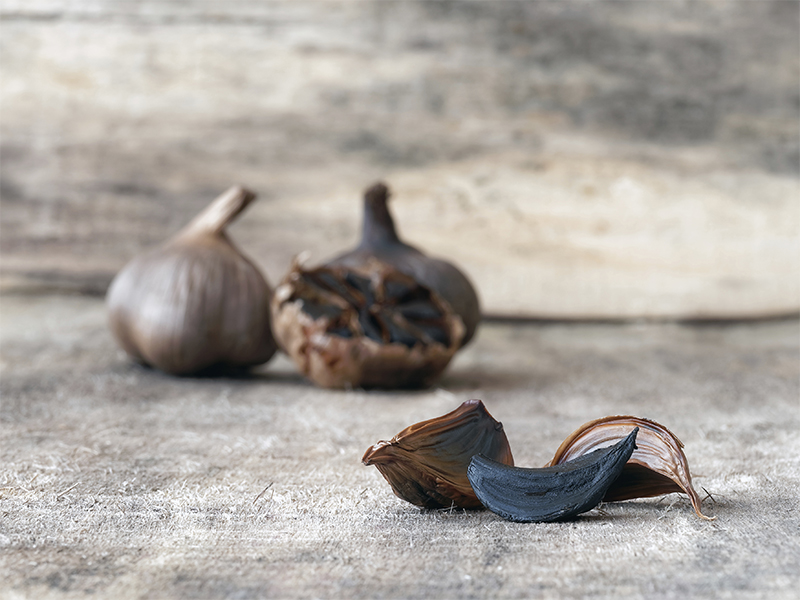When you see it, it looks like garlic went on vacay. Its tanned skin and slightly crispy exterior mirrors that a of sun-worshiping Floridian that says, “Just a little bit more.” And when it comes time to peel back the skin, it reveals a deep and mysterious looking gem that is delicate to the touch.
So, as my husband and I stood in true “Raiders of the Lost Ark” fashion, we both tasted a clove. Rich, nutty, earthy, a bit sweet with a whisper of garlic flavor just to remind you what the heck you’re actually eating. Black garlic is one of those morphed ingredients that make you take a few steps back.
I, like many of you, love and respect garlic. I’m talking about real garlic—not the powder that comes from a jar but real garlic. You’re rolling you’re eyes. But if you’re too lazy to peel it, then as far as I’m concerned, you don’t deserve to use it.
Black Magic: 40 days to Perfection
Black garlic is the magnificent product of a 40-day process. The garlic is steamed and then placed in an airtight container in a low-heat oven. Humidity and temperature are varied during the process, and more steam is added. Some home chefs have argued that this process can be done at home. Other chefs say making black garlic at home is like trying to make your own caviar.
The process originated in Asia. Koreans have perfected the art of fermentation, patiently coaxing everyday humble ingredients to be transported to an entirely different flavor dimension—kimchi. So, it’s not surprising that the origin of black garlic started in Korea. Like many things ancient and natural, you can bet that black garlic possesses some pretty wicked health benefits. In Thailand, it is thought to help people live longer.
Black Garlic: More Than Just Flavor
Studies have shown that the fermentation of black garlic basically turns it into a super garlic. The compound S-allylcysteine, a natural component of fresh garlic and a derivative of the amino acid cysteine, was found in much greater concentrations in black garlic and is thought to help lower cholesterol and decrease the risk of cancer, according to the National Institute of Health.
Garlic contains a biologically active component called allicin containing antimicrobial, antibiotic and anti-fungal agents. In black garlic, S-allylcysteine assists with the absorption of allicin, helping it metabolize more easily, which could offer boosted protection against infections.
High levels of antioxidants can be found in garlic. But twice the amount can be found in black garlic. Antioxidants protect the cells from disease and are thought to slow down the aging process—I guess the Thai people were right. Because black garlic is a powerhouse, the increased levels of antioxidants giving protection from free radical damage make it a super food for preventing chronic disease. Free radicals damage cells leading to heart disease, Alzheimer’s, circulatory problems, rheumatoid arthritis and other chronic diseases.
Black garlic is a compelling gastronomical à la mode. I’ve seen it popping up more and more over the past few years being used in both Asian—try it with some ginger and rice wine vinegar—and Italian cooking—at home it’s my secret ingredient to my Bolognese sauce. But I also love it spread on top of a warm crusty piece of bread drizzled with good olive oil. Its earthy flavor profile makes it a natural pairing with wild mushrooms as well.


